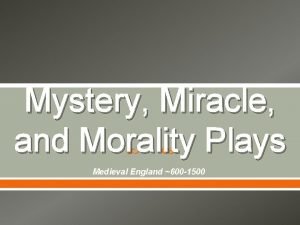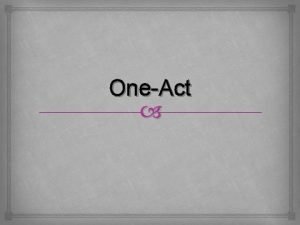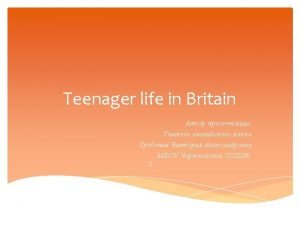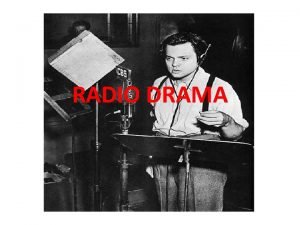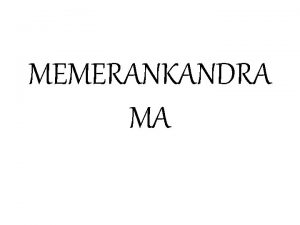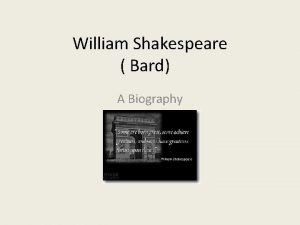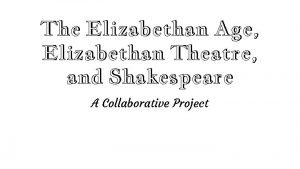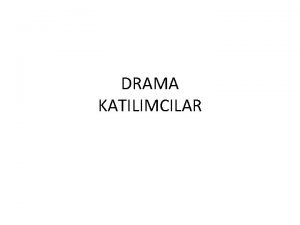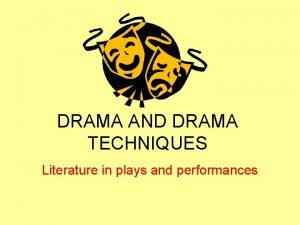DRAMA TYPES One Act Plays One Act Plays








- Slides: 8

DRAMA TYPES One- Act Plays

One- Act Plays Is similar to a short story in its limitations. There is a complete drama within one act. It is brief, condensed, and single in effect. One situation or episode is presented, permitting no minor plots or side actions that may distract attention for the single purpose and effect being developed. Characters are few in number, quickly introduced, and very limited in character development. Dialogue and Plot must carry the action forward smoothly and quickly.

DEFINITION �A one-act play is a play that has only one act, as distinct from plays that occur over several acts. Oneact plays may consist of one or more scenes. In recent years the 10 - minute play known as "flash drama" has emerged as a popular sub-genre of the one- act play, especially in writing competitions. The origin of the one-act play may be traced to the very beginning of drama: in ancient Greece, Cyclops, a satyr play by Euripides, is an early example.

Elements of One- Act Play � Theme � Plot � Character � Dialogue

Theme �Theme necessary �Ask yourself: What is the play about? �Revenge? Self- discovery? �Mind needs to be clear about theme �Characters, plots, and sub- plots need to point to and support theme �Sub- plots might be missing in one- act plays

Plot �Different in one- act play from a full length play �In a one- act play, there is only time for one significant event �Determining place for hero, where all can be won or lost �Events leading to this, can be included without being shown to audience �The events that follow must be inferred or understood by the audience

Character �There is not much area to develop all the characters �The hero or the protagonist’s character needs to be more developed and focused on �The antagonist can be developed to show conflict �Some other characters can also be a little bit developed to move the story forward

Dialogue �Economy is the key aspect here �Each line must be crafted carefully to focus on theme, the incident and the character of the protagonist �The dialogues need not be terse, but concise and full of meaning �Dialogues irrelevant to the plot, must be altered or omitted immediately
